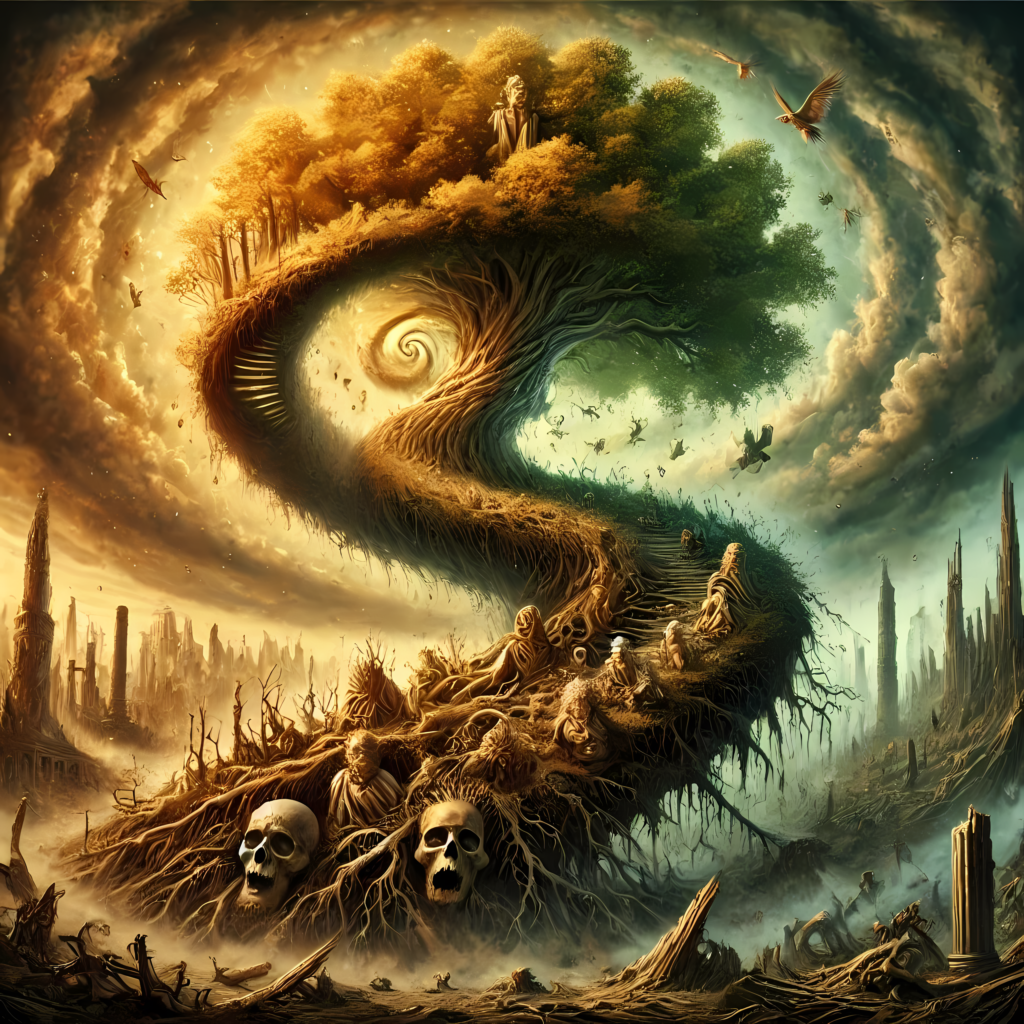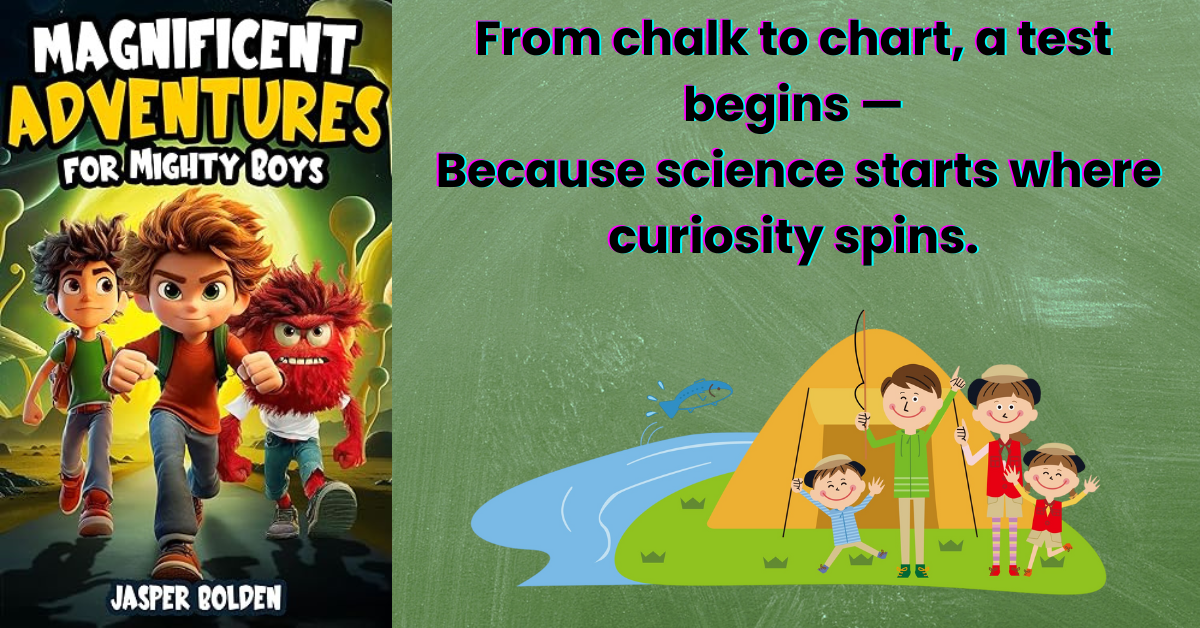The Dark Spiral of Power
How Crime, Tyranny, and Hidden Empires Collapse Under the Reverse Spiral Effect
Not Just the Rise of Darkness — But Its Collapse
There’s something eerie about how often the darkest forces in history rise the same way. Whether it’s a mafia network, a drug empire, or a full-blown dictatorship, they all seem to follow a familiar playbook. Secrecy. Violence. Control. And for a while, they thrive. They gather influence in the shadows—buying silence, rewriting norms, manipulating the systems meant to stop them.
But here’s the twist: no matter how strong they appear, they never last.
This isn’t wishful thinking. It’s structural. These forces collapse not just from external resistance but from a pattern of internal unraveling—what I call the Reverse Spiral Effect. Greed turns into betrayal. Power turns into paranoia. The very tactics that built them start tearing them apart.
This chapter isn’t just about crime or tyranny—it’s about how they collapse.
The Reverse Spiral of Crime Empires
1. How Crime Syndicates Rise
Dark economies often begin where legitimate ones fail. Cartels don’t just appear out of nowhere—they step into the cracks where governments falter. They offer protection (for a price), jobs (illicit but better than none), and brutal order where law has retreated.
Their playbook includes:
- Corruption – Officials who look the other way—for the right price.
- Control of Black Markets – From heroin to human trafficking, they dominate what’s forbidden.
- Violence – Not just for enemies, but as a form of governance.
- Influence – Buying politicians, sponsoring campaigns, and even funding hospitals.
To be honest, some syndicates begin to resemble governments. They build infrastructure, pay salaries, and enforce their own kind of law. But underneath, the whole thing is built on sand.
Example: Medellín’s False Statehood
Pablo Escobar didn’t just smuggle cocaine—he built a kingdom. Stadiums, clinics, housing projects. To the poor, he was a hero. But his violence didn’t stay in the slums. It crept into the lives of judges, politicians, business elites. And that’s when the walls started closing in.
2. Why They Collapse
Eventually, these empires grow too fast, stretch too far, and start eating themselves alive.
- Betrayal – Power invites ego. Ego invites disloyalty.
- Public Pressure – A tipping point comes when fear no longer outweighs outrage.
- Overexpansion – They lose control of what they built.
These organizations aren’t taken down by some grand conspiracy. More often, they collapse under the weight of their own contradictions.
Example: The Fall of El Chapo
El Chapo ran one of the most ruthless, tech-savvy cartels in modern history. But fame lured him into the spotlight. A few interviews here. A film deal there. And then came betrayal—from inside his own ranks. Once myth becomes meme, the spiral begins.
3. Case Studies
- The Sicilian Mafia – Undone not just by police, but by its own fractured code of silence.
- Escobar – Rose with violence, fell by the same hand.
- Yakuza – Once semi-legit, now shunned even by the businesses they once funded.
- Triads – Faded under the digital surveillance age.
The arc? Always the same: dominance → exposure → decline.
The Global Drug Trade: A Reverse Spiral Marketplace
1. Why the Drug Economy Is Built to Fail
Think of it like a twisted stock market. One cartel rises, then another undercuts it. Demand shifts, suppliers feud, and eventually, the whole thing fractures.
- Boom → Monopoly → Backlash
- Suppression → Fragmentation → Reinvention
Violence, greed, and surveillance don’t just threaten these empires—they constantly force them to reboot under new faces.
Example: Mexico’s Cartel Fragmentation
When figures like El Chapo or Arturo Beltrán Leyva fell, what followed wasn’t peace—it was chaos. Gangs splintered. Violence soared. The spiral didn’t stop. It just spun faster.
2. War on Drugs = An Infinite Spiral
Governments crack down. Traffickers adapt. Then it starts again.
- Opium Wars: Empire-sponsored addiction leads to rebellion.
- Cocaine Boom: One kingpin falls, another takes the crown.
- Fentanyl: Synthetics sneak past outdated enforcement.
No one wins. The wheel just turns.
The Reverse Spiral of Political Tyranny
1. How Tyrants Consolidate Power
Not every dictatorship begins with a tank. Many start with applause. Promises of security. A scapegoat or two. And then—tight control of the press, arrests of dissenters, and a swelling cult of personality.
But the stronger they grip, the more brittle they become.
2. Why They Break
- Overreach – They bite off more than the nation can chew.
- Paranoia – Loyalty tests purge the competent.
- Collapse – Economic isolation triggers revolt.
Tyranny seems stable—until it’s not. Then it falls fast.
3. Famous Downfalls
- Hitler – Military hubris lit his fuse.
- Ceaușescu – From idol to enemy in a matter of days.
- Stalin – His own terror machine choked his system’s flexibility.
No empire survives on fear forever.
Dark Forces Within the Socio-Economic Fabric
Let’s be real: crime doesn’t just live in alleyways. It hides in boardrooms, real estate, offshore accounts.
- Black Economies—Drug cash buying condos.
- Shadow Finance—Shell companies hiding billions.
- Cultural Masks—Gangs sponsoring football teams or religious festivals.
- Political Deals—Peace bought through silence.
These forces collapse not when they’re exposed—but when the legitimate systems protecting them begin to crack too.
The Gravity Always Pulls Down
Nothing—no cartel, no tyrant, no black-market empire—lasts forever. Not because they’re evil, but because they’re unstable by design.
The Reverse Spiral Effect is what makes them rot from the inside long before the outside attacks.
“The spiral doesn’t care who you are. It only asks one question: Can you survive yourself?”
And history answers: almost no one can.
📍 More insights at: https://rzripplerbooks.com//the-book-voyager-dy-page/
📍 Follow me: https://linktr.ee/rzripplerbooks



